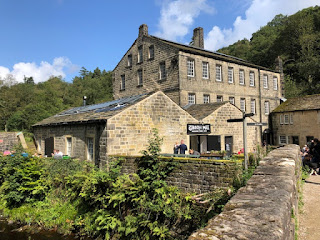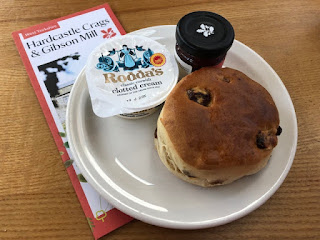I ate 21 National Trust scones in August. It must be a world record, or qualify me for an OBE or something. But there's only one prize that I have my eyes on and it's the completion of this National Trust Scone quest. I want to be finished by December 2020.
But everytime I think of the end of this scone quest, I have a very uneasy feeling that it'll be like the running scene in Forrest Gump. He runs for 3 years, 2 months, 14 days, and 16 hours (a mere trifle compared to my 7.5 years but let's not quibble) and then suddenly he just stops in the road and says to his co-runners; "I'm pretty tired. I think I'll go home now," and he slowly limps off, leaving them abandoned.
I've gained a lot from this project - weight, mainly - but the most important thing I've acquired is access to a community of funny, interesting people that have supported the quest on Twitter, Facebook, and Instagram and have become a huge part of the entire thing.
So I'm creating a podcast where I'll interview some of the people that have inspired and influenced this National Trust Scone Odyssey. The idea is currently on hold until 2020 but you can listen to the first episode, which covers the important subject of Christmas Pudding scones. Enjoy!
But everytime I think of the end of this scone quest, I have a very uneasy feeling that it'll be like the running scene in Forrest Gump. He runs for 3 years, 2 months, 14 days, and 16 hours (a mere trifle compared to my 7.5 years but let's not quibble) and then suddenly he just stops in the road and says to his co-runners; "I'm pretty tired. I think I'll go home now," and he slowly limps off, leaving them abandoned.
I've gained a lot from this project - weight, mainly - but the most important thing I've acquired is access to a community of funny, interesting people that have supported the quest on Twitter, Facebook, and Instagram and have become a huge part of the entire thing.
So I'm creating a podcast where I'll interview some of the people that have inspired and influenced this National Trust Scone Odyssey. The idea is currently on hold until 2020 but you can listen to the first episode, which covers the important subject of Christmas Pudding scones. Enjoy!











